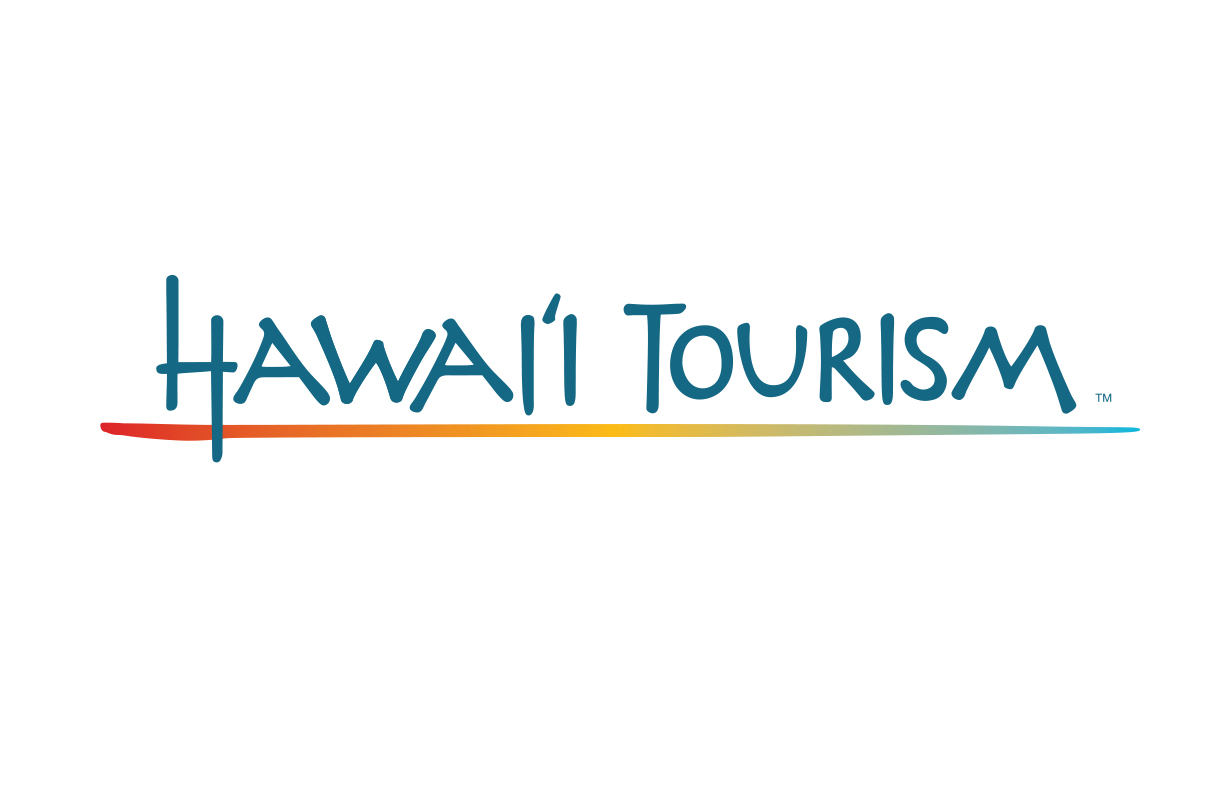The 5th U.S.-Japan Cultural Exchange Seminar Program
The First Japanese U.S. Citizen: Joseph Heco and the Beginning of the U.S.-Japan Relations
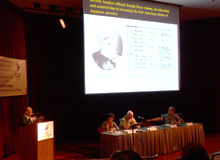
The U.S.-Japan Cultural Exchange Seminar was held for the 5th time this year at the Hawaii Convention Center which the topic was on Joseph Heco. Perhaps his name may be unfamiliar, but he was the first Japanese person to be naturalized as a U.S. citizen 150 years ago during the Bakumatsu period.
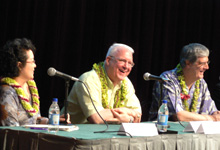
From left: Dr. Gay Michiko Satsuma,Associate Director, Center for Japanese Studies at University of Hawaii at Manoa; Dr. George Mercer Brooke III, descendant of Lt. John Mercer Brooke; Mr. Dwight Damon, descendant of Rev. Samuel Chenery Damon, Honolulu’s seamen’s chaplain.
During the same period, John Mannjiro (who was one of the first Japanese people to visit the U.S.) was rescused by the American whaler ship when his boat was wrecked in the sea near Japan. 10 years later, he returned to Japan where he was promoted by the shogunate government. Henceforth he continued to emphasize the importance of the U.S.-Japan relations from Japan’s perspective. On the other hand, Heco was baptized in Baltimore and obtained his U.S. citizenship. He was working for the U.S. Embassy in Yokohama after his return to Japan. They both experienced castaways and lived a checkered life. Also, they served for the U.S.-Japan relations which they led a similar life.
There were researchers and descendants of Joseph Heco at this year’s seminar, where we were able to learn about the beginning of the U.S.-Japan relations through the life of Heco.
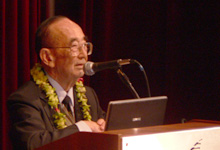
Dr. Samuel N. Mukaida, President of the Joseph Heco Society of Hawaii
What caught the attention was Dr. George Mercer Brooke, Jr., who is a great-grandson of George Mercer Brooke, whom he served as the U.S. Navy Captain that supported Heco back to Japan. The Captain Brooke is also known for sailing back to the U.S. by the Japanese warship “Kanrin Maru”, which is a ship that he sailed to San Francisco with Kaishu Katsu, Yukichi Fukuzawa and John Manjiro.
Hawaii is located in the middle of the Pacific Ocean, where there are many historical places that are crucial to the U.S.-Japan relations. We will be planning for the next year’s U.S.-Japan Cultural Exchange Seminar as well.
This seminar was very much supported by the Consulate General of Japan in Honolulu, the Japan-America Society of Hawaii as well as the Joseph Heco Society of Hawaii.
Masakazu Asanuma
The Honolulu Festival Foundation, Executive Director
The Exhibition of Joseph Heco and Kamishibai
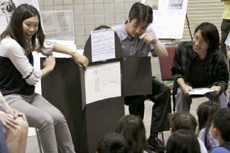
The exhibition of Joseph Heco was held on the 1st floor of the Hawaii Convention Center. The students of Kapiolani Community College (KCC) presented the life of Joseph Heco through Kamishibai (Story Card Theater) at the venue, where many panels were been displayed. Every slide of Kamishibai was handmade which its content was easy for both children and adults to understand.
Mrs. Linda Fujikawa, who is teaching at KCC stated, “It is very important for students to spread their knowledge to others. By applying and sharing their knowledge that the students learned in class, they can also increase their confidence.”
The members of the Joseph Heco Society of Hawaii were very pleased that the students of KCC made Kamishibai, which was presented for the children in a clear and detailed manner. This Kamishibai will be utilized again to tell the story of Heco in the future as well.
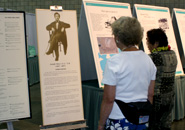
The guests were reading the panels by the exhibition of Joseph Heco.
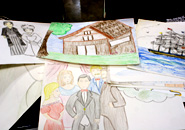
The students of KCC drew a picture on each pieces of paper to create Kamishibai on the life of Joseph Heco.
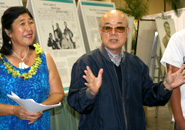
A member of the Joseph Heco Society of Hawaii gave a word of gratitude to the students.

 日本語
日本語
